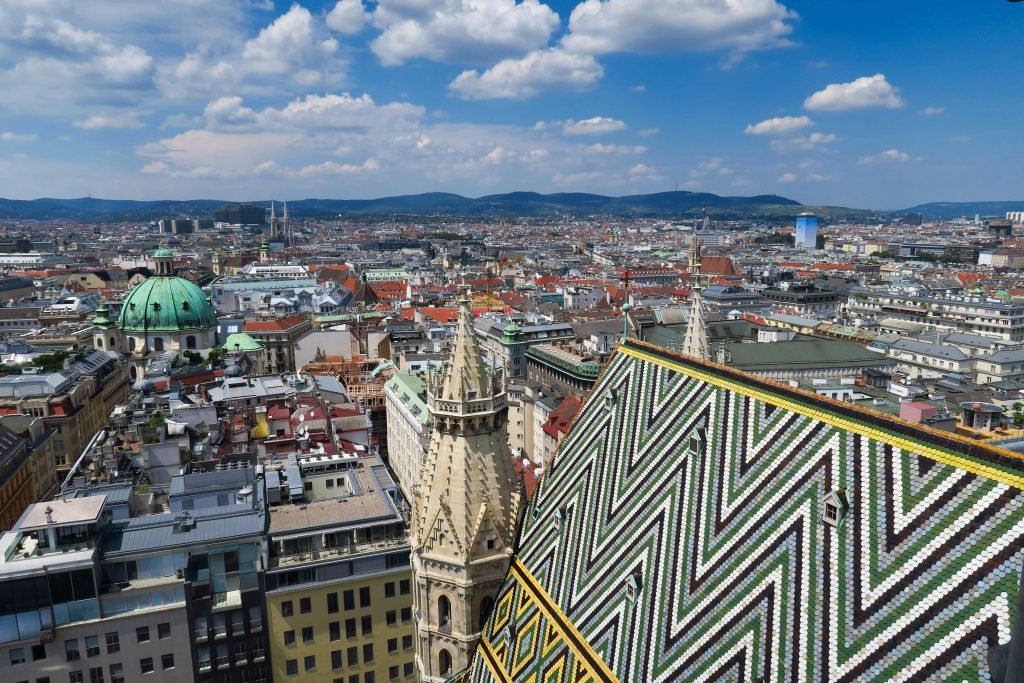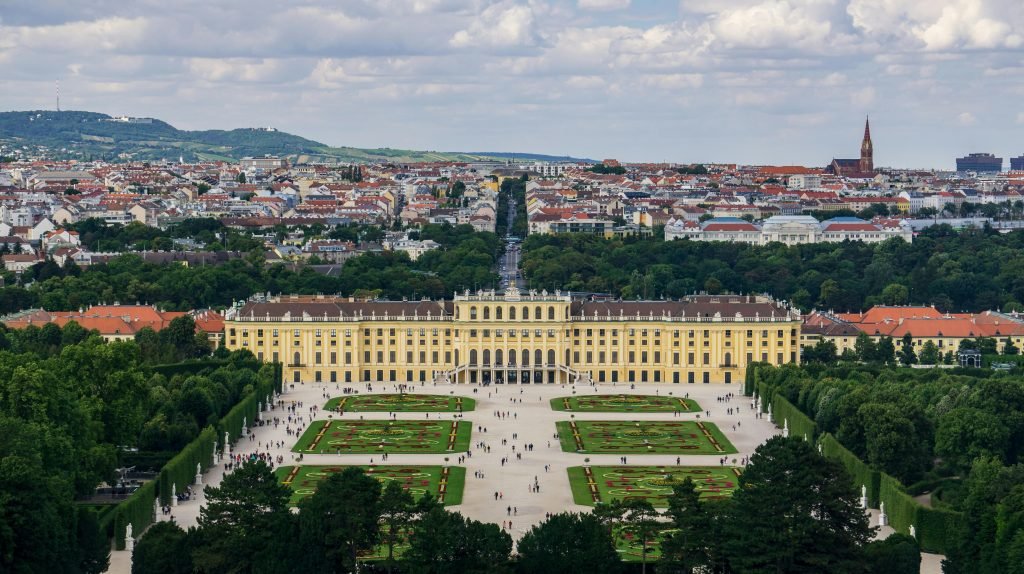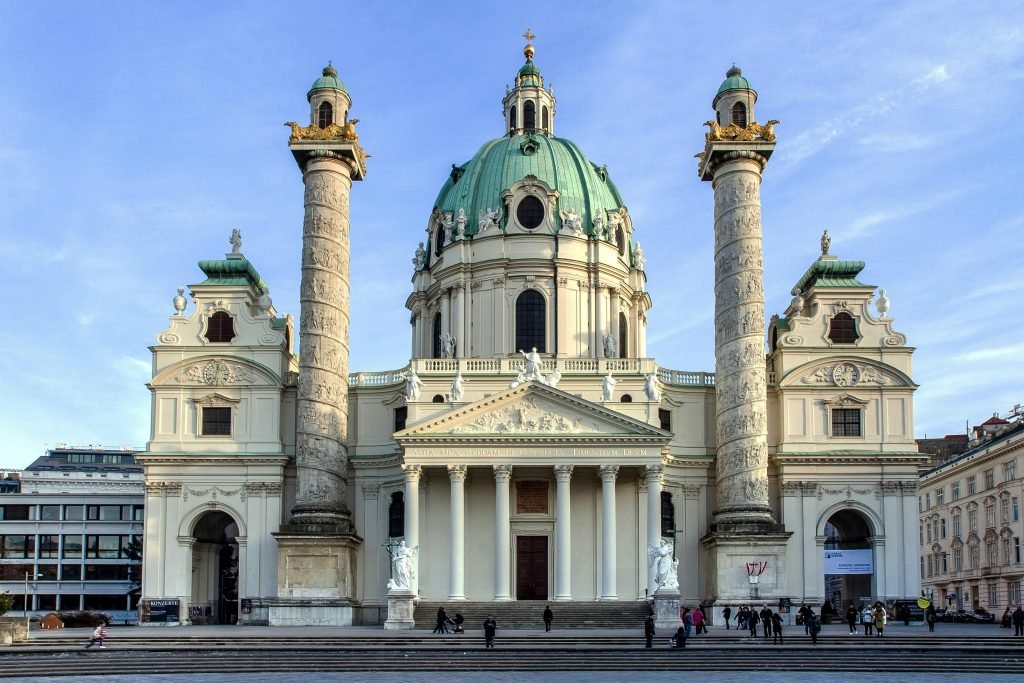Introduction
Wien , Austria’s capital, perfectly balances imperial history with modern culture. This city offers baroque palaces, world-class museums, and classical music venues alongside vibrant cafés, diverse neighborhoods, and efficient public transportation that makes exploring straightforward.
During my New Year’s visit, Wien was covered in fresh snow, transforming its architecture into a winter wonderland. Despite the cold weather, we experienced genuine Austrian hospitality, festive street celebrations, and the incredible aroma of pastries from historic cafés. The trip was filled with authentic moments that I want to help you experience too.
Whether you’re visiting Wien in December for Christmas markets and Glühwein, or in spring when the city comes alive with color, these 10 essential Wien will help you make the most of your visit. Here’s what to do in Wien based on real experience walking these historic streets.
1. St. Stephen’s Cathedral (Stephansdom): Wien’s Iconic Landmark
St. Stephen’s Cathedral dominates Wien’s city center and serves as the perfect starting point for any Wien itinerary. This Gothic masterpiece features a distinctive patterned roof and soaring spire that’s visible throughout the historic district. The cathedral has been Wien’s spiritual center for over 800 years.
What to do: Climb the South Tower’s 343 steps for panoramic Wien views. The effort is worth it – you’ll see the entire city spread below, including the Danube River and Wien Woods. Inside, admire the Gothic architecture, carved altars, and impressive acoustics.
Practical tip: The surrounding Stephansplatz square is always busy with street performers and shops, making it an excellent area for walking tours and photo opportunities.
Best time to visit: Early morning or late afternoon to avoid crowds. The cathedral is free to enter, though tower access requires a ticket. If you want to visit the altar area, there’s a 7€ fee, or you can attend one of the masses for free access.
2. Schönbrunn Palace: Must-See Habsburg Imperial Palace
Schönbrunn Palace ranks as Wien most visited attraction and Austria’s most important cultural monument. This baroque palace served as the Habsburg family’s summer residence and showcases imperial Austrian history through 40 opulent rooms open to the public.
What to see: The Mirror Room where young Mozart performed for Empress Maria Theresa, the elaborate Great Gallery used for state receptions, and the ornate imperial apartments. The palace tour provides insight into royal life and European history.
The gardens: The 120-hectare palace gardens are equally impressive. Visit the Gloriette pavilion for elevated views over Wien , explore the maze and orangery, and enjoy seasonal flowers. In winter, snow-covered gardens create magical photo opportunities.
Planning your visit: Book tickets online to skip entrance lines. Allow 3-4 hours total for palace and gardens. The palace is easily accessible by U-Bahn (subway).
3. Wien Christmas Markets: December Winter Magic
Wien’s Christmas markets transform the city into a festive destination during December. These traditional markets offer Austrian holiday culture, local crafts, and seasonal treats in historic settings throughout the city.
Top Christmas markets:
What to try: Glühwein (mulled wine), roasted chestnuts, traditional Austrian pastries, and local handmade crafts. The markets create a cozy atmosphere perfect for cold weather.
Important timing: Most markets close December 24-26, so plan accordingly if visiting during Christmas. Some markets extend through New Year’s for late December visitors.
4. Wien Zoo (Tiergarten Schönbrunn): World’s Oldest Zoo
The Wien Zoo, founded in 1752, holds the distinction of being the world’s oldest continuously operating zoo. Despite initial skepticism about zoos, this facility impressed with its commitment to animal welfare and conservation.
Why it stands out: Large, well-designed enclosures that prioritize animal comfort, healthy-looking animals, and educational programs focused on conservation. The giant pandas are particularly popular and live in a specially designed habitat.
What to expect: Diverse species from Arctic to tropical animals, interactive exhibits, and clear information about conservation efforts. The zoo participates in international breeding programs for endangered species.
Best for: Families with children, animal lovers, and anyone interested in conservation efforts. Located within Schönbrunn Palace grounds, making it easy to combine with palace visits.
5. Prater Park and Giant Ferris Wheel: Wien’s Historic Amusement Area
The Prater combines a large public park with a traditional amusement area anchored by the famous Giant Ferris Wheel (Wiener Riesenrad). This 250-year-old recreational space offers both history and entertainment.
The Giant Ferris Wheel: Built in 1897, this 65-meter landmark provides 20-minute rides with rotating Wien views. The historic wooden gondolas accommodate up to 15 people each and offer perspectives of the Danube, city rooftops, and distant Alps.
Amusement park: Traditional carnival rides, bumper cars, games, and food stalls create a nostalgic atmosphere. Many attractions operate year-round, though winter schedules may be limited.
Park activities: The surrounding parkland is popular for jogging, cycling, and picnics during warmer weather. Several restaurants and beer gardens provide refreshments.
6. Belvedere Palace Complex: Baroque Architecture and Austrian Art
The Belvedere consists of two baroque palaces (Upper and Lower) connected by formal gardens. This UNESCO World Heritage site houses Austria’s most important art collection and represents some of Wien’s finest architecture.
Art highlights: Gustav Klimt’s famous painting “The Kiss” is the star attraction, displayed alongside other Klimt works and pieces by Egon Schiele and Oskar Kokoschka. The collection focuses on Austrian art from the Middle Ages to contemporary works.
The gardens: Terraced baroque gardens create Instagram-worthy symmetrical patterns and seasonal flower displays. The view from Upper Belvedere across the gardens toward Wien’s city center offers excellent photo opportunities.
Visit planning: Allow 2-3 hours for both palaces and gardens. The Upper Belvedere houses the main art collection, while Lower Belvedere features temporary exhibitions.
7. Wien Coffeehouse Culture and Sacher Torte: UNESCO Cultural Heritage
Wien’s coffeehouse culture earned UNESCO recognition as an Intangible Cultural Heritage. These traditional cafés function as cultural institutions where locals read newspapers, meet friends, and enjoy expertly prepared coffee and pastries.
Essential coffeehouses:
What to order: Melange (Wien’s version of cappuccino), Sachertorte, Apfelstrudel, Kaiserschmarrn (shredded pancake with plum compote), and other traditional Austrian pastries. Coffeehouses serve as perfect refuges during cold weather.
Cultural experience: These cafés encourage lingering – it’s normal to spend hours reading, writing, or people-watching over a single coffee. Waiters maintain traditional service standards and dress codes.
8. MuseumsQuartier: Wien’s Contemporary Cultural District
The MuseumsQuartier (MQ) ranks among the world’s largest cultural complexes, housed in former imperial stables. This district demonstrates Wien’s commitment to contemporary culture alongside its imperial heritage.
Key museums:
Cultural activities: The complex hosts concerts, festivals, and cultural events throughout the year. Courtyards, cafés, and bars create social spaces where locals and visitors interact.
Modern Wien: This area proves Wien isn’t stuck in the past, showcasing cutting-edge art, innovative exhibitions, and progressive cultural programming.
9. Karlskirche (St. Charles’s Church): Baroque Masterpiece with Panoramic Views
Karlskirche stands as one of Wien’s most impressive baroque churches and offers a unique architectural experience. Built in the early 18th century, this church features a distinctive design combining a classical portico with baroque twin columns and a large dome, creating one of Wien’s most photographed religious buildings.
What makes it special: The church offers a rare opportunity to take an elevator up inside the dome for close-up views of the ceiling frescoes and panoramic views over Wien. The interior combines baroque grandeur with beautiful frescoes and artwork.
Practical details: Located near the Wien State Opera and Musikverein, making it easy to combine with other cultural visits. The elevator ride to the dome provides both artistic and city viewing opportunities.
Best for: Architecture enthusiasts, photography lovers, and visitors wanting a different perspective on Wien’s religious buildings beyond St. Stephen’s Cathedral.
10. Hofburg Palace: Wien’s Imperial Heart
The Hofburg Palace complex served as the principal imperial palace of the Habsburg dynasty and remains one of Wien’s most significant historical sites. This massive complex houses multiple museums, the Austrian President’s offices, and the famous Spanish Riding School.
Key attractions within Hofburg:
What to see: The complex spans multiple courtyards and buildings, showcasing over 600 years of imperial history. The treasury houses crown jewels and imperial regalia, while various museums cover everything from musical instruments to weaponry.
Planning your visit: Allow a full day if visiting multiple attractions within the complex. Located in the city center, it’s easily walkable from other major attractions. Book Spanish Riding School tickets well in advance.
Best Time to Visit Wien
Spring (April-May): Ideal weather, blooming flowers, fewer crowds than summer. May is particularly recommended for perfect weather and peak beauty. While winter visits offer their own charm, May represents Wien’s optimal travel season. The city emerges from winter with mild weather (15-20°C/59-68°F), blooming flowers, and extended daylight hours with sunset after 8 PM. The Volksgarten’s rose garden blooms spectacularly, chestnut trees display white and pink blossoms, and outdoor concerts and festivals take advantage of pleasant weather.
Summer (June-August): Warm weather, outdoor events, but higher prices and larger crowds.
Fall (September-October): Pleasant temperatures, autumn colors, cultural season begins.
Winter (November-March): Christmas markets, fewer tourists, potential snow, but shorter days and cold weather. Wien offers one of Europe’s most welcoming New Year’s Eve celebrations with the historic city center becoming a safe, family-friendly open-air party where street musicians perform, vendors sell hot drinks, and fireworks light up the sky at midnight.
Getting Around Wien
Wien’s public transportation system ranks among Europe’s best. The U-Bahn (subway), trams, and buses connect all major attractions efficiently.
Transportation tips:
Where to Stay in Wien
Historic Center (District 1): Walking distance to major attractions, expensive but convenient
Leopoldstadt (District 2): Close to Prater, more affordable, good transport connections
Landstraße (District 3): Near Belvedere, mix of residential and tourist areas
Mariahilf (District 6): Trendy area with shops and restaurants, good value
Conclusion
Wien successfully combines imperial grandeur with modern culture, creating a destination that appeals to history enthusiasts, art lovers, and casual travelers alike. From Gothic cathedrals to contemporary museums, from traditional coffeehouses to innovative cultural districts, Wien offers experiences that satisfy diverse interests.
Whether you visit during winter’s Christmas market season or spring’s blooming beauty, Wien welcomes visitors with efficient infrastructure, genuine hospitality, and attractions that reveal new layers with each exploration. The city rewards both quick visits and extended stays, with enough cultural depth and practical amenities to create memorable experiences for any traveler.
Plan your Wien visit around your interests – art lovers should prioritize museums and palaces, history enthusiasts will love the imperial sites, and those seeking authentic culture should focus on coffeehouses and local neighborhoods. Whatever your approach, Wien’s combination of accessibility, beauty, and cultural richness makes it one of Europe’s most satisfying travel destinations.


